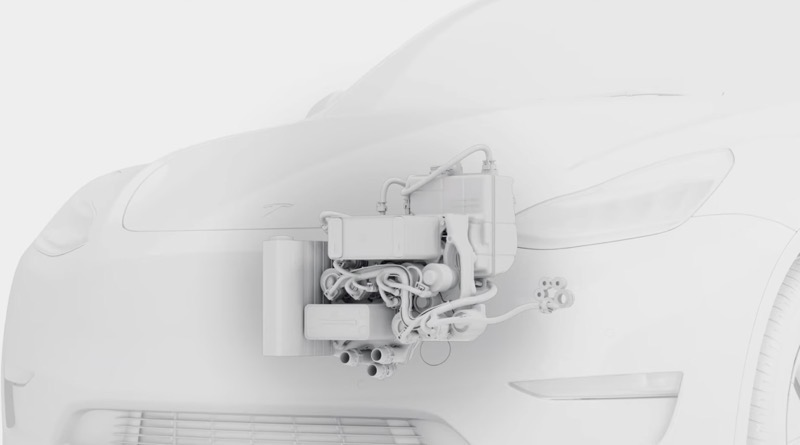
How Tesla’s Heat Pump was Designed, Explained by its Engineers VIDEO]

Tesla uploaded a new video on Thursday evening, titled “Tesla Heat Pump”, noting it offers “More Range in Cold Weather.”
Heat pump systems are not new technology, but they are far more efficient than resistive heaters found in traditional cars. Tesla engineers reimagined the heat pump that first debuted in the Model Y, but is now available across all of the company’s vehicles, including Model 3, Model S and Model X.
Tesla engineers detail how they wanted to build a heat pump with less complexity and fewer parts, to allow for easier manufacturing. The team created the ‘Super Manifold,’ essentially a two-layer PCB assembly. They also came up with the ‘octavalve’, which is a barrel inside that turns and activates number of ports depending on the heat pump mode.
The company says the heat pump in Tesla vehicles brings 15-20% less energy consumption, allowing customers more range to reach their final destinations.
“Heat Pump draws excess heat from the powertrain to maximize Supercharging speeds & driving range in cold weather. For example, your Tesla can use heat created by the battery & drive units to warm your cabin, saving energy & improving range on long drives. Heat Pump comes standard in every new Tesla,” explains the 2 minute and 34 second video.
Check it out below:

Back in October 2020, Tesla CEO Elon Musk said, “The new heat pump in Model Y is what really makes the difference in cold weather.” Earlier in the year he said, “Model Y heat pump is some of the best engineering I’ve seen in a while. Team did next-level work.”
Last year, Tesla had to fix some issues with its heat pump, where some Model 3 and Model Y vehicles saw their HVAC systems shut down or not work properly in cold climates.
Where Tesla is able to churn out heat pumps for all its vehicles, other automakers such as Volkswagen and Audi are struggling to add them to their electric vehicles, due to the ongoing supply chain and chip shortage.

